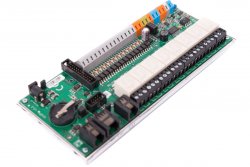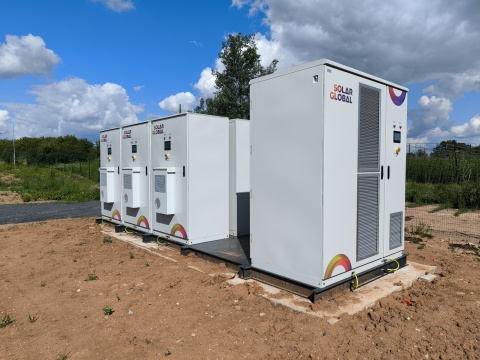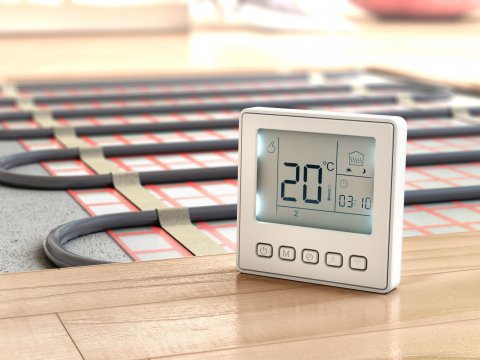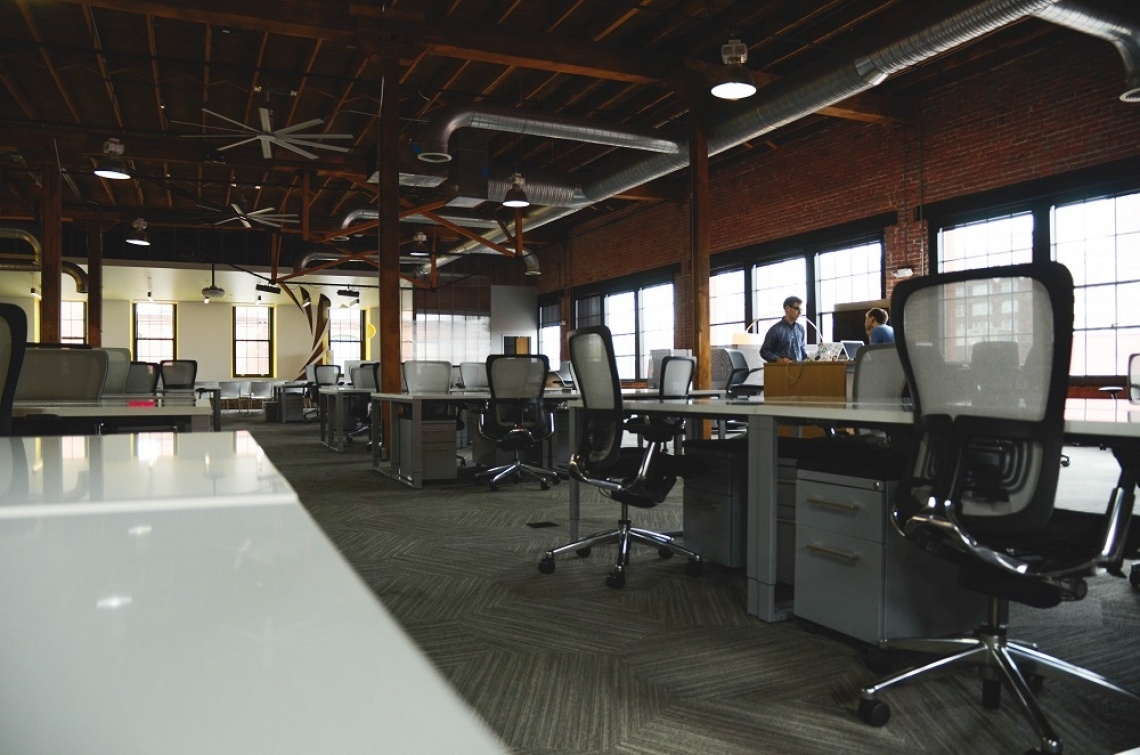
Heating, Cooling and Air Conditioning (HVAC) system controlled with UniPi 1.1.
Nice to meet you, smart heating.
A certain Czech security company residing in Brno has decided to improve both air conditioning system and central heating in order to monitor building temperature and optimize it when necessary. An important goal was also to make the working environment more comfortable for employees.
Before the adoption of the current system, the company invested into a similar system made by Honeywell company. Goals were the same, but the system did not have sufficient flexibility, suffered from reliability issues and after 15 years of operation, its usefulness was simply exhausted.
Looking for a suitable replacement, the company decided to purchase our UniPi control units. The reason was, UniPi not only provided everything the company needed but also offered the possibility of future extension.
What does it consist of?
The whole system is controlled by up to 30 UniPi control units, providing direct communication between software and hardware with a help of one 4 analogue output extension and one 8 relay addon. Approximately 180 thermometers are placed all around the building with a thermometer placed in every room, pipe or any other necessary spot. Windows are equipped with magnetic contacts.
The heating water is propelled into the boiler and then pumped through the piping by three-way valves and circulation pumps. Heating is enabled when the outside temperature decreases. During the summer months, air conditioning system then uses cold water for air conditioning and ventilation. Both processes are controlled by a single centralized system.
Regarding software, the system utilizes an altered version of EVOK software and custom-made scripts. Each separate part of the system can be controlled via the internet by entering commands into the terminal prompt.
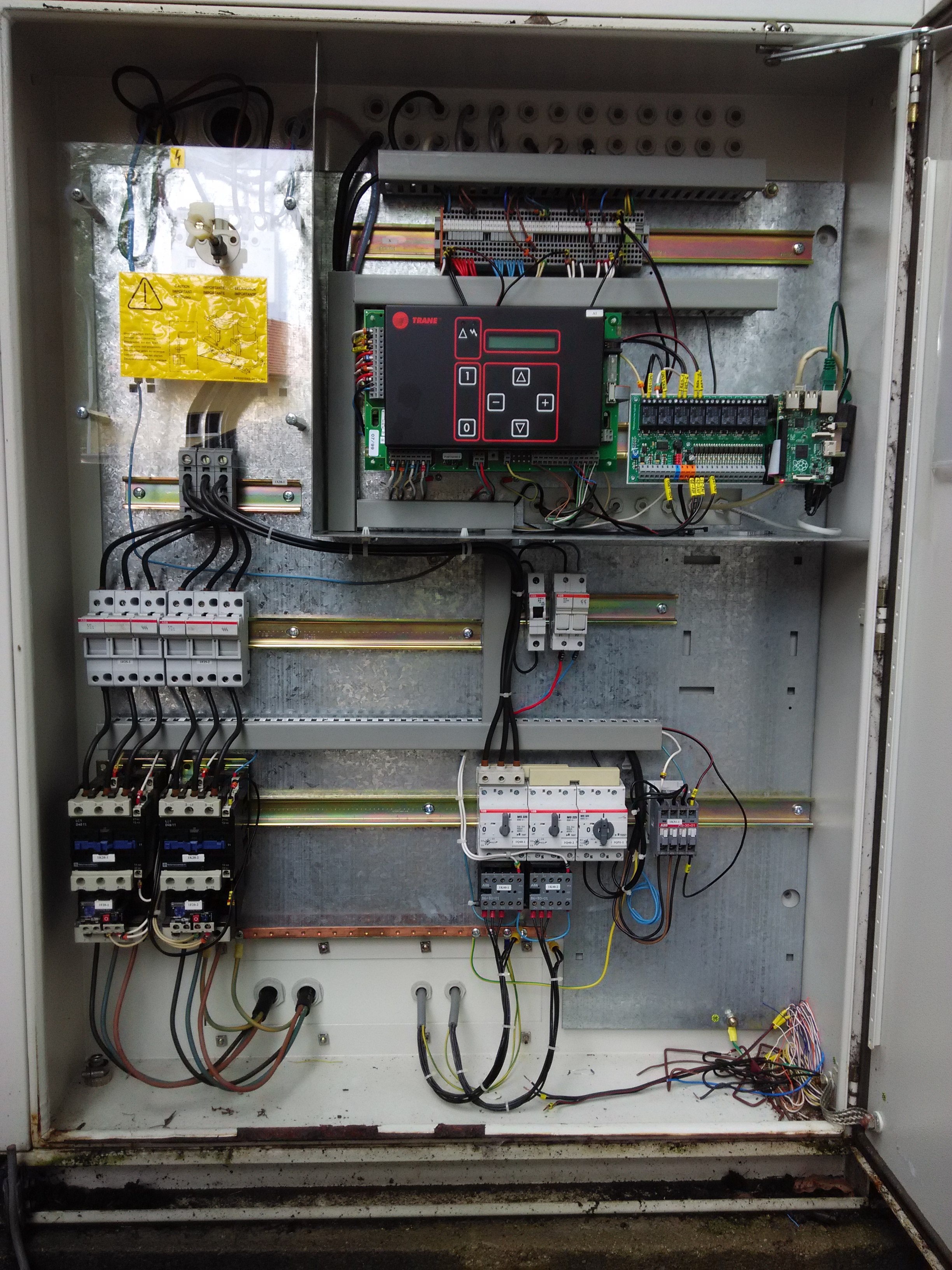
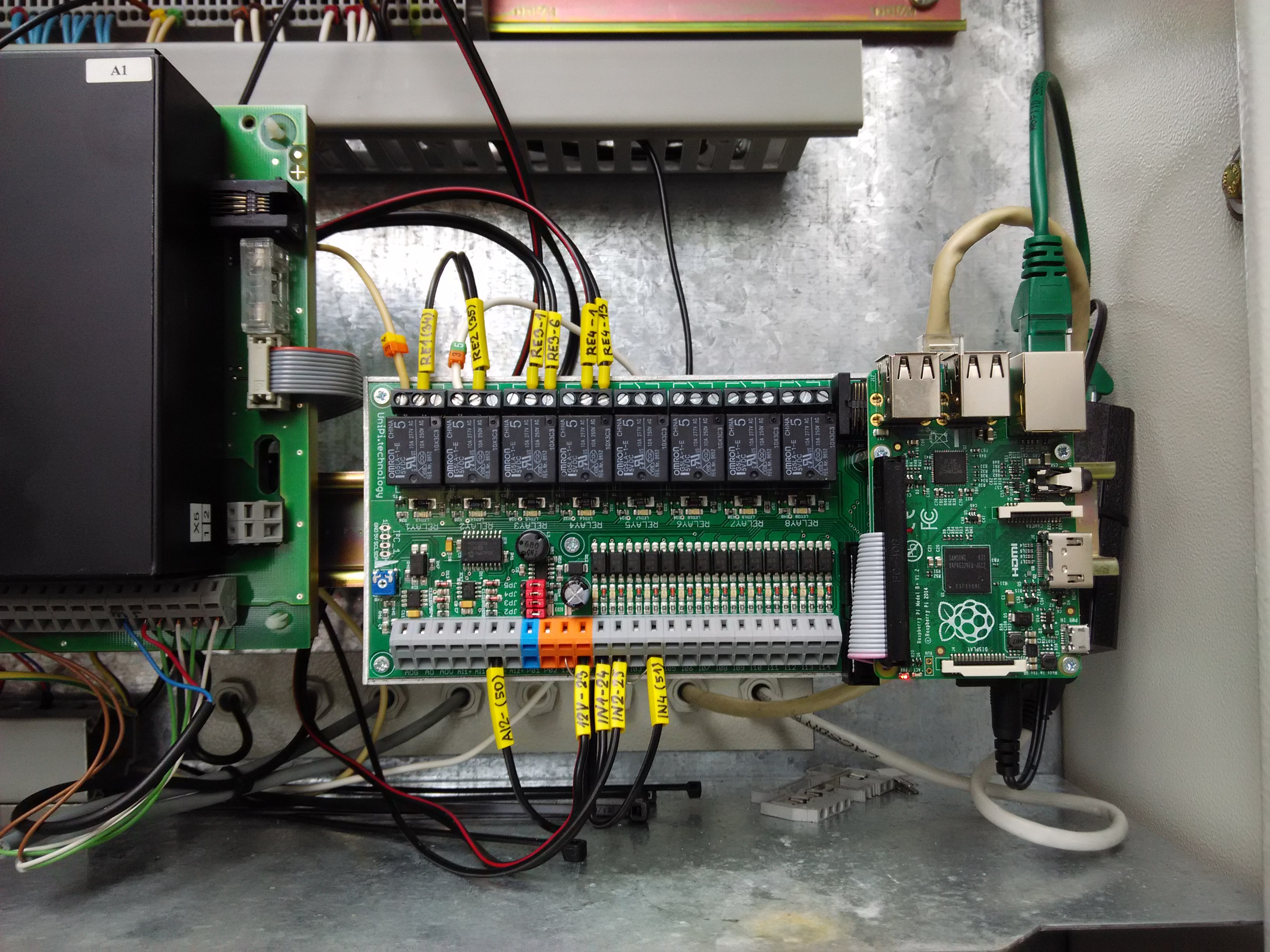
Detail of cooler’s controller
How does it work?
The system switches boilers or air conditioning on and off, releases valves when necessary, monitors temperatures and also controls the state of circulation pumps switches for required pumps. A software solution is based on algorithms and software installed on the UniPi board controller.
The system is using statistics and user configuration to determine when to turn the heating or cooling on and for how long it must operate to reach and keep the optimal temperature in all rooms during the whole day. Each room can be individually configured, such configuration has no effect on global settings. Some rooms have less effective insulation and require more temperature regulation, while other rooms (such as server rooms) need to maintain a cool and dry environment. These requirements can be met by an individual configuration of each room.
Each window is equipped with a magnetic contact. Whenever a window is opened, the system detects it and automatically reduce the heating into the said room to prevent energy waste.
Doors also have a system to monitor which rooms are occupied and which are not. At the beginning of each workday, the climate of the whole building is optimized to pre-set temperature. The thermoregulation is then disabled in unused (locked) rooms - the system does so after checking if the room is really empty and determining whether or not is necessary to keep the temperature.
All strategic spots are equipped with thermometers. As the sun changes its position during the day, different parts of the building are heated by the sun and require cooling. Thanks to thermometers, the system can detect these parts and adjust the heating scheme accordingly.
Thermometers also have an additional task. In case of malfunction of the boiler, pipes, ventilation fans or any other component of the system, thermometers can show the exact location where the heating was interrupted. This allows for much faster service and repair of any part of the system. Control units are also interconnected - each master control unit monitors the activity of other control units.
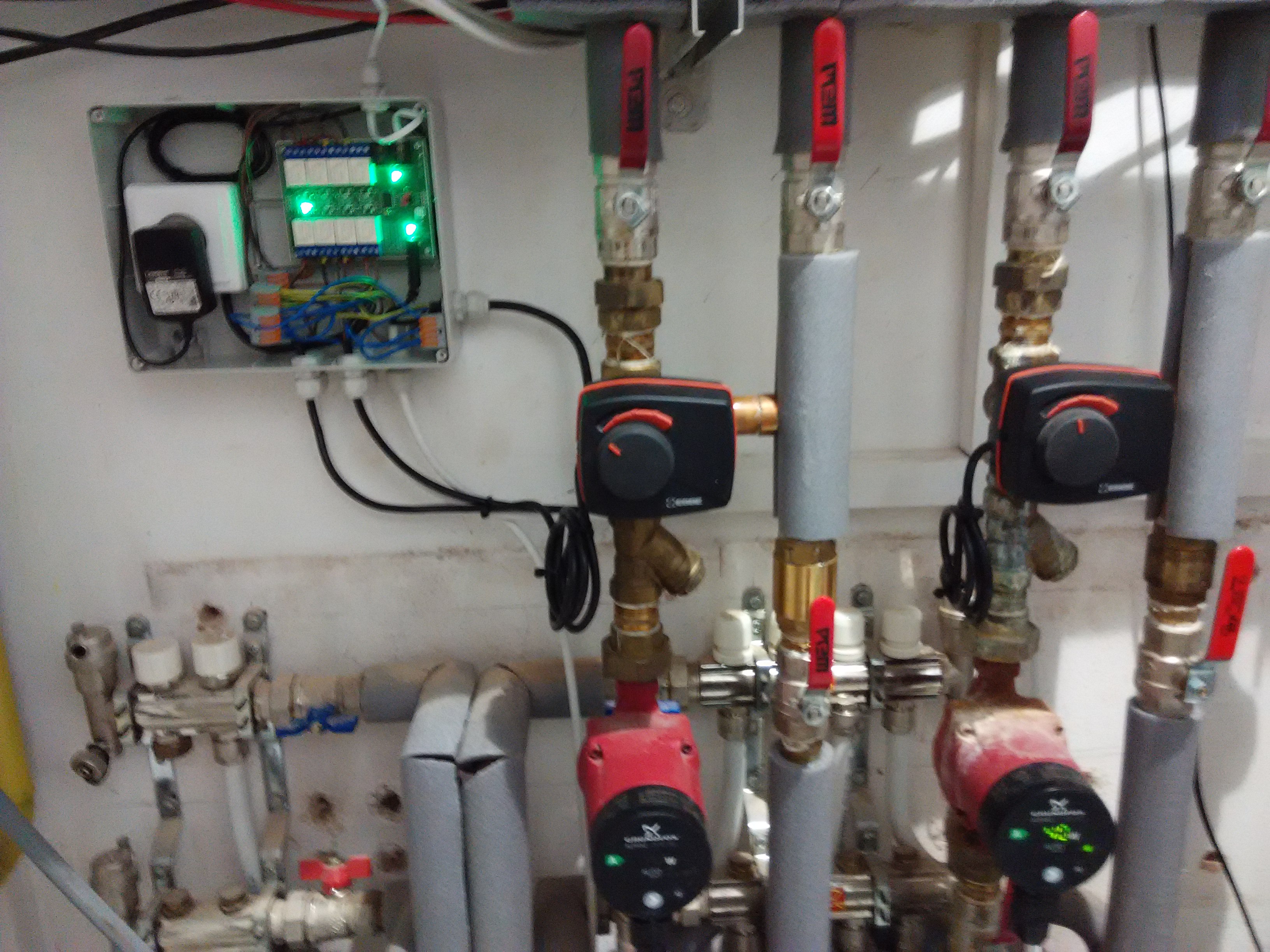
Extension board controller connected to three-way digital valves
Additionally, two indication diodes (red and green) are located in each thermoregulated room. These diodes serve as indicators of heating mode. If a green diode is active, the room's temperature is not matching the preset temperature and heating/cooling is active. The red diode signals either a system error or an opened window in the room that needs to be closed. If both diodes are inactive, all systems are nominal.
Air conditioning fans are programmed to make the whole thermoregulation process as comfortable as possible for all employees inside. An example - if the system is in cooling mode, more fans are activated to improve air circulation. That means persons sitting nearby radiators will not feel an unpleasant "cold wind" from behind. This also reduces health impacts.
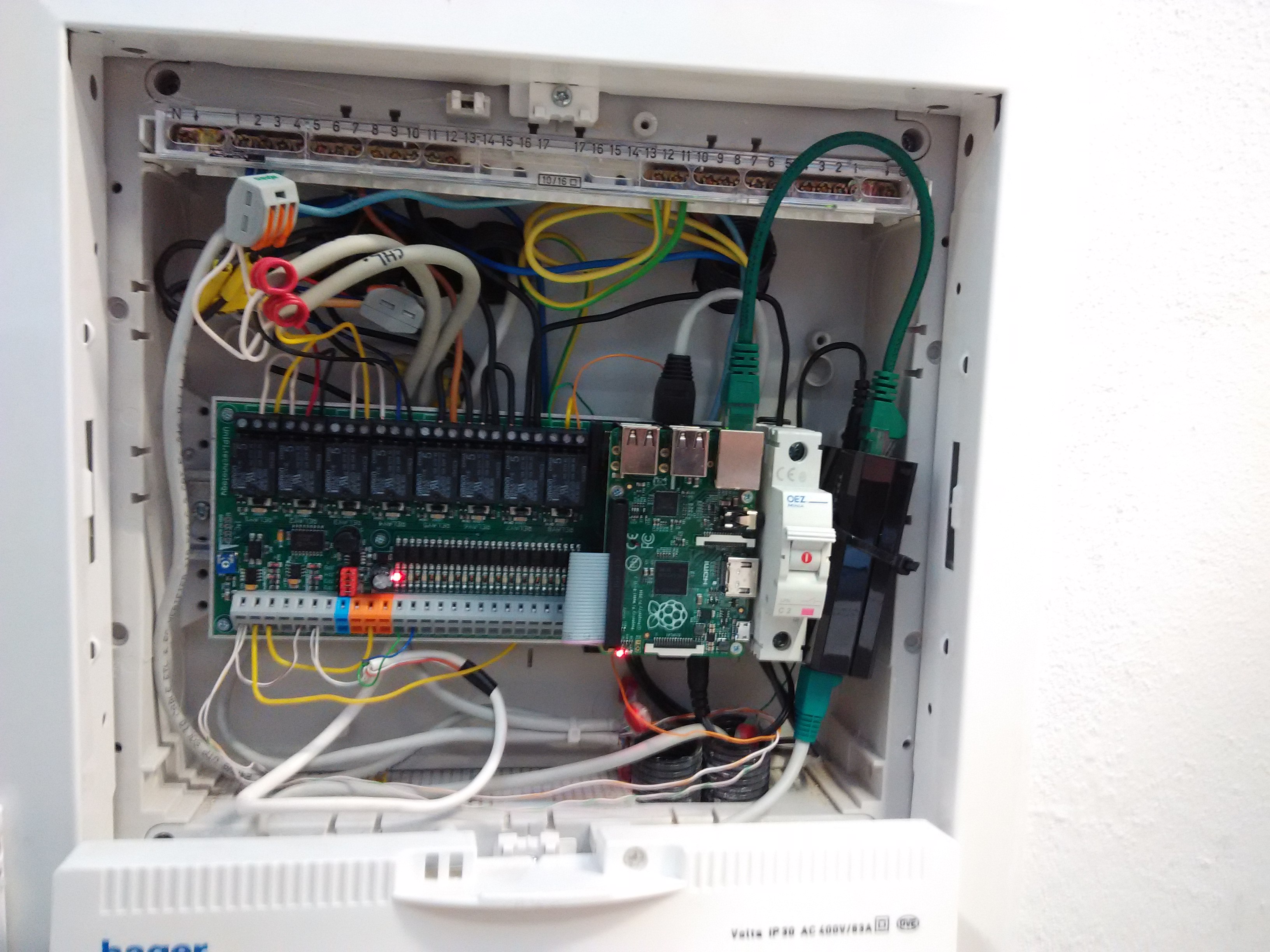
Fan coil controller detail
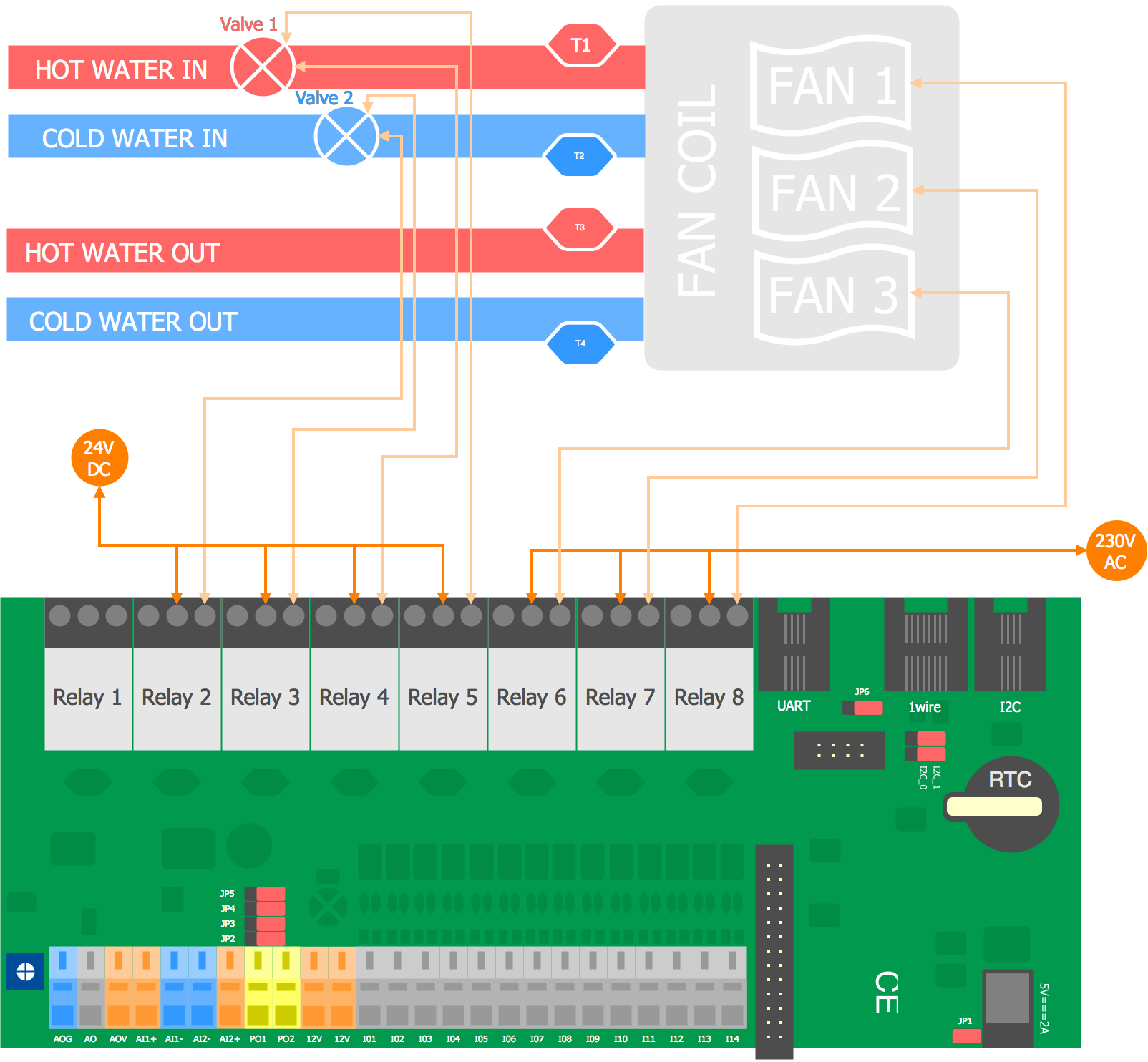
Fan coil connection scheme
Conclusion
The system was definitely an improvement. Not only employees can enjoy a much more comfortable workplace, but it is also noticeably easier for boiler operators to control the whole system. The system is also well-balanced and minimizes energy waste. The company also have a better overview of heating for the whole year. Thanks to that, it can be easily determined which rooms require better insulation. Maintenance crews can also detect and repair malfunctions much faster. And thanks to UniPi, the whole system allows an effortless system extension.
